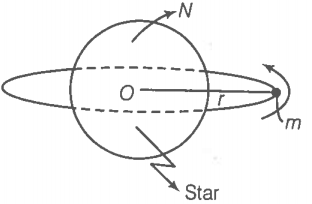Q. 34 A star like the sun has several bodies moving around it at different distances. Consider that all of them are moving in circular orbits. Let r be the distance of a body from the centre of the star and let its linear velocity be v, angular velocity , kinetic energy K, gravitational potential energy U, total energy E & and angular momentum L. As the radius r of the orbit increases, determine which of the above quantities increases and which one decreases.

Therefore, when r increases, the total energy becomes less negative i.e., increases.
Step 3: Find the angular momentum of the body.
Angular momentum of the body, L
Therefore, when r increases, angular momentum L increases.

© 2025 GoodEd Technologies Pvt. Ltd.